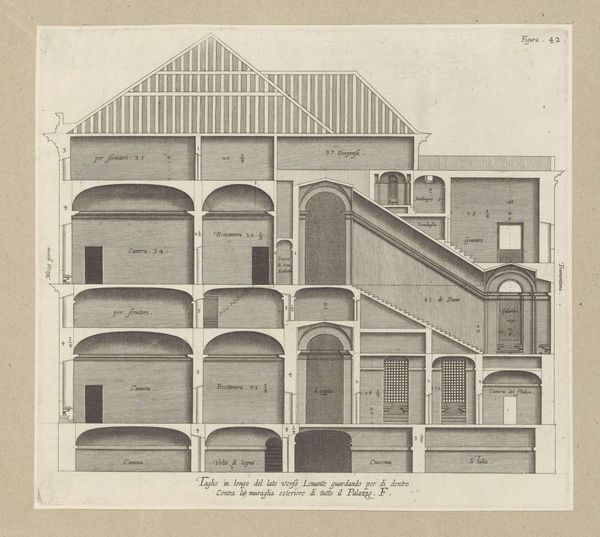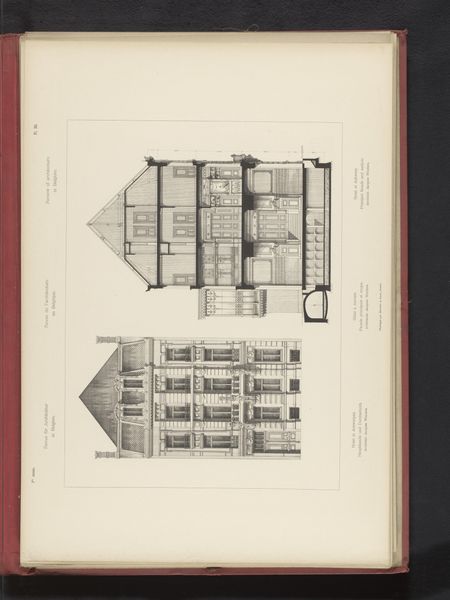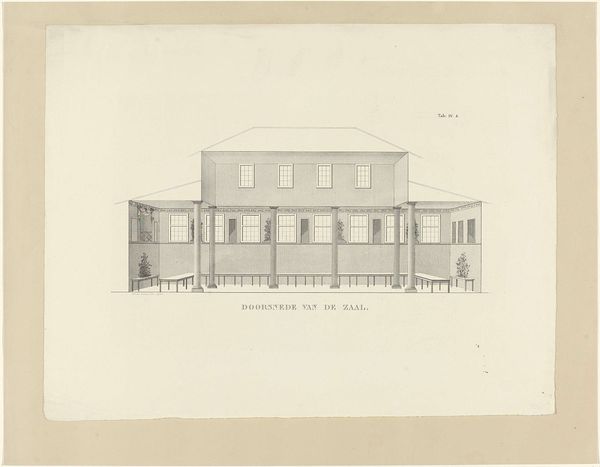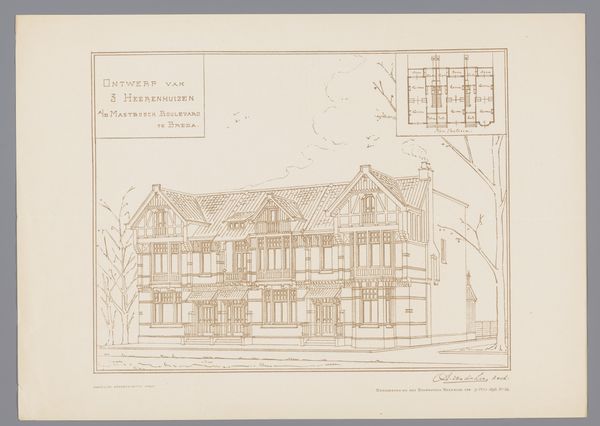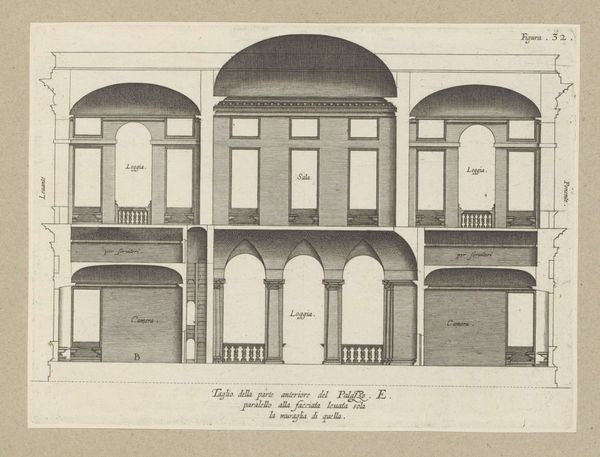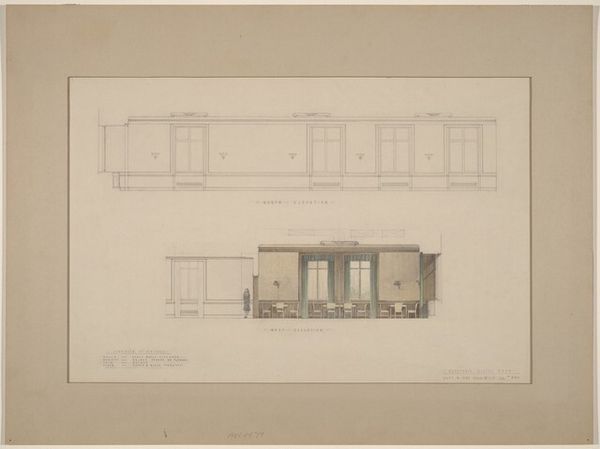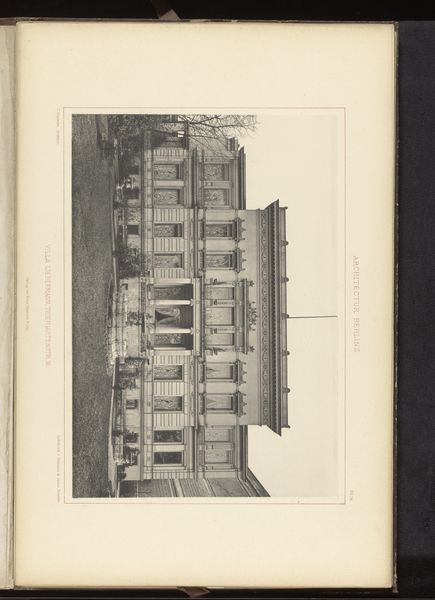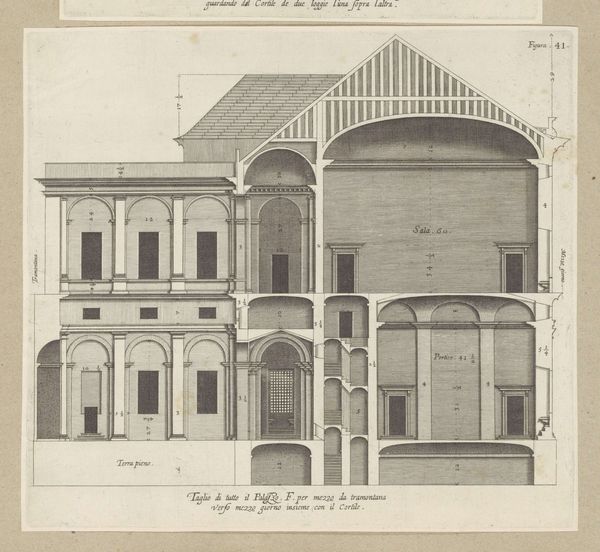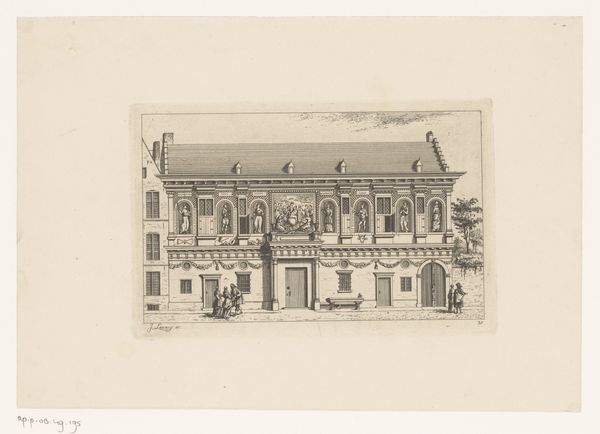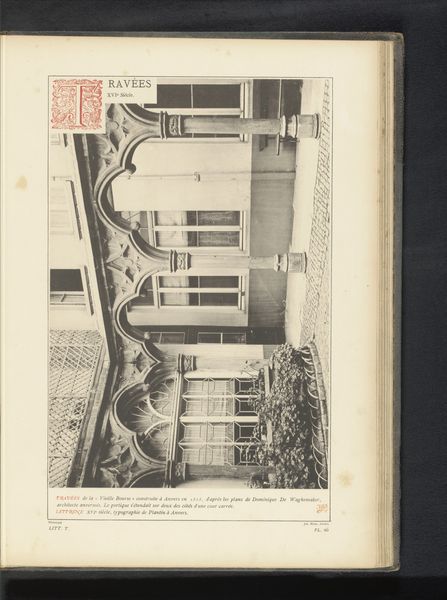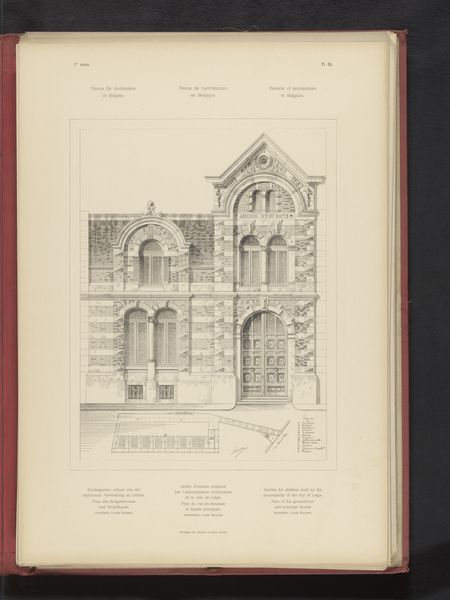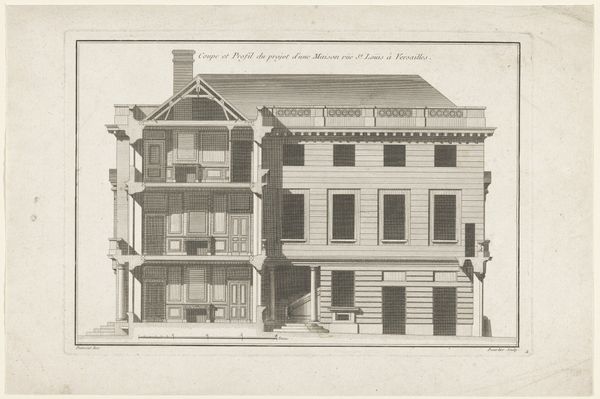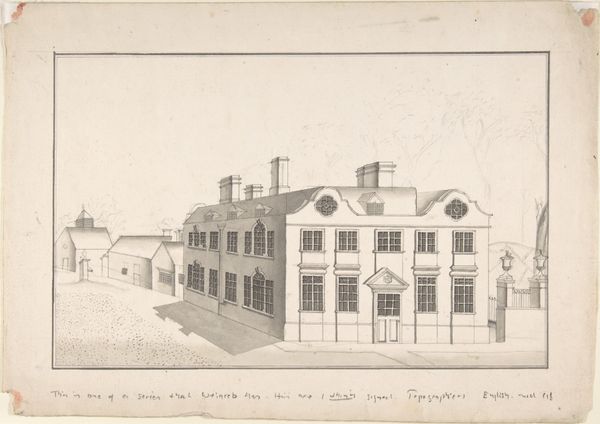
drawing, print, engraving, architecture
#
drawing
#
neoclacissism
# print
#
perspective
#
form
#
line
#
cityscape
#
engraving
#
architecture
#
realism
Dimensions: height 219 mm, width 342 mm
Copyright: Rijks Museum: Open Domain
Curator: Here we have "Doorsnede van de Aula Academica in Gent," or "Section of the Academic Hall in Ghent," an engraving dating back to around 1827. The artist, Pierre Jacques Goetghebuer, gives us a fascinating look inside this Neoclassical building. What strikes you most about it? Editor: The austerity of it, I think. The precision and meticulous detail almost erase any sense of human warmth. It feels like an architectural diagram striving for pure rationality. What sociopolitical values does this clarity attempt to embody or even enforce, do you think? Curator: That's an insightful observation. Given its context, it's deeply rooted in the burgeoning bourgeois power of the time, their drive to assert control and order across social strata. The architectural style echoes a return to classical ideals of structure and governance after revolutionary disruption, which had real-world consequences concerning societal power and hierarchy. Editor: Exactly. And that perfectly rendered interior, exposed so plainly? Is there not something carceral about exposing the halls of academia so clearly? The building becomes almost a panopticon. Was this print used propagandistically? Did this supposed realism allow for a fantasy of total and complete social knowledge? Curator: Its realism served the very real ambitions of the elite who sought to control the narratives within those halls. The building as a symbolic vessel, dictating the acceptable discourses of the period. Prints such as these shaped a collective identity—one that embraced a highly idealized and controlled vision of progress. Editor: It's sobering to see how the pursuit of objective truth in architecture, represented by such a meticulous cross-section, can unwittingly or not become a tool to subtly influence power dynamics within institutions. A simple print revealing structural order has deep cultural resonance. Curator: Absolutely, seeing this image helps us recognize how architectural representation goes far beyond mere documentation. It participated in forging an intellectual climate with long-lasting repercussions on who has access to knowledge and on whose terms. Editor: Agreed. The beauty of this seemingly sterile image lies in unveiling a history of power, embedded in stone and ink. Curator: Indeed. A powerful reminder to be critical and to engage art as evidence when trying to build inclusive futures.
Comments
No comments
Be the first to comment and join the conversation on the ultimate creative platform.
